A Bridge Too Far (film)
6.6 /10 1 Votes
73% Rotten Tomatoes Country United States | 7.4/10 IMDb 2/4 Roger Ebert Genre Drama, History, War Duration Language English | |||||||||||||||||||||||||||||||||
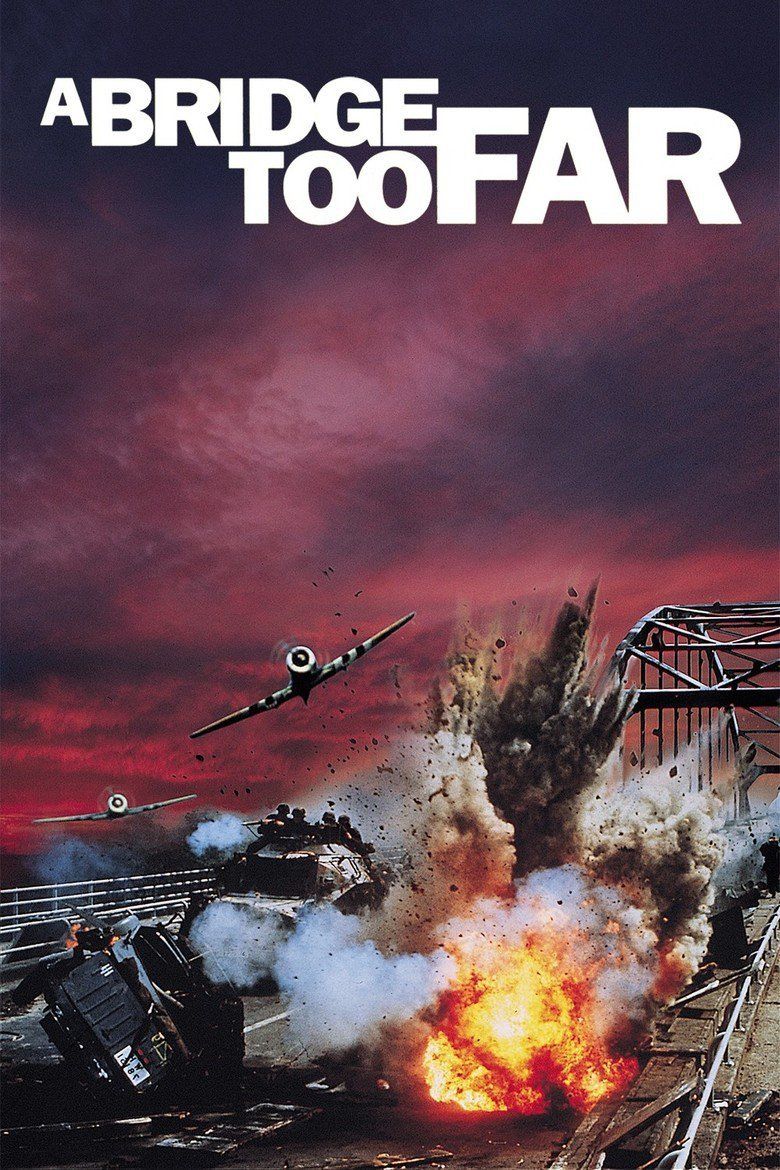 | ||||||||||||||||||||||||||||||||||
Release date June 15, 1977 Cast (Lt. Gen. Fredrick. Browning), (Sgt. Eddie Dohun), (Lt. Col. John O.E. Vandeleur), (Maj. Gen. Robert E. Urquhart), (Lt. Gen. Brian G. Horrocks), (Col. Robert Stout) Similar movies Fury , The Thin Red Line , Captain America: The First Avenger , Saving Private Ryan , When Trumpets Fade , None But the Brave Tagline Out of the sky comes the screen's most incredible spectacle of men and war! | ||||||||||||||||||||||||||||||||||
A bridge too far official trailer 1 sean connery michael caine movie 1977 hd
A Bridge Too Far is a 1977 epic war film based on the 1974 book of the same name by Cornelius Ryan, adapted by William Goldman. It was produced by Joseph E. Levine and Richard P. Levine and directed by Richard Attenborough.
Contents
- A bridge too far official trailer 1 sean connery michael caine movie 1977 hd
- Plot
- Production
- Finance
- Reception
- Promotion
- References
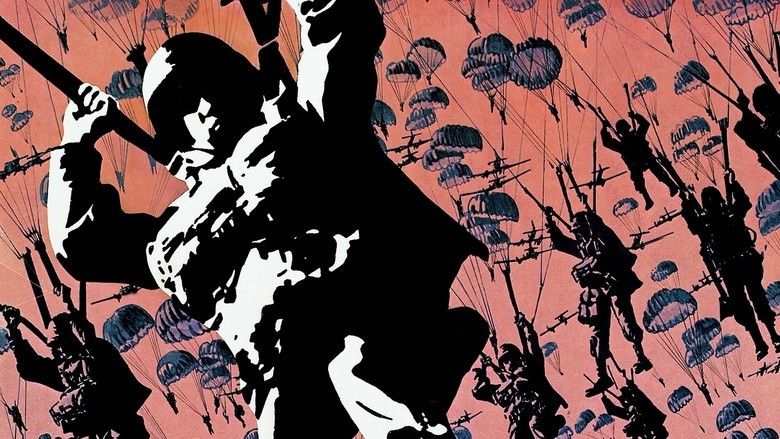
The film tells the story of the failure of Operation Market Garden during World War II. The operation was intended to allow the Allies to break through German lines and seize several bridges in the occupied Netherlands, including one at Arnhem, with the main objective of outflanking German defences in order to end the war by Christmas of 1944.
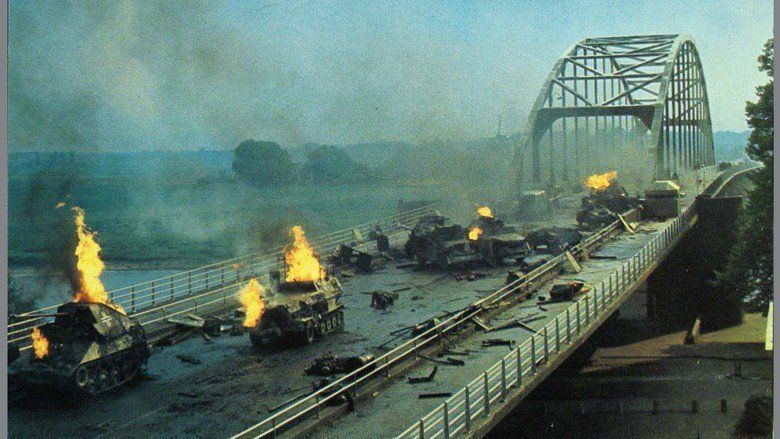
The name for the film comes from an unconfirmed comment attributed to British Lieutenant-General Frederick Browning, deputy commander of the First Allied Airborne Army, who told Field Marshal Bernard Montgomery, the operation's architect, before the operation: "I think we may be going a bridge too far", in reference to the intention of seizing the Arnhem bridgehead over the Rhine river.
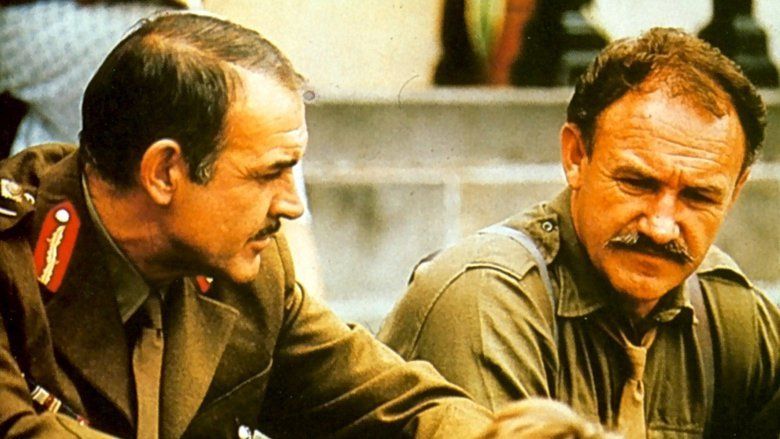
The ensemble cast includes Dirk Bogarde, James Caan, Michael Caine, Sean Connery, Edward Fox, Elliott Gould, Gene Hackman, Anthony Hopkins, Hardy Krüger, Laurence Olivier, Ryan O'Neal, Robert Redford, Maximilian Schell and Liv Ullmann. The music was scored by John Addison, who had served in the British XXX Corps during Market Garden.
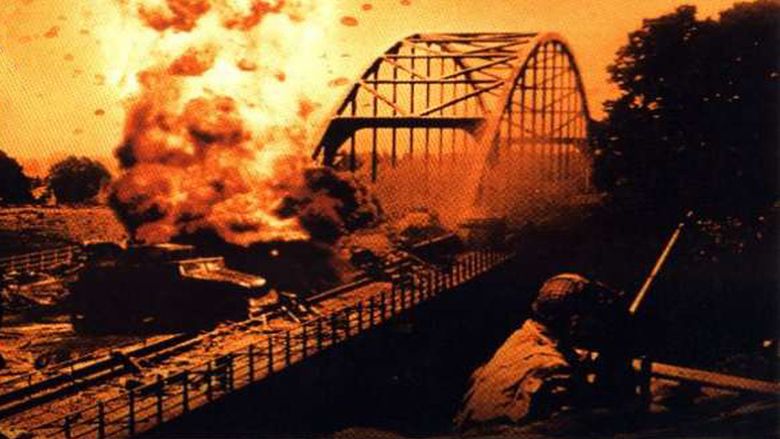
Plot

Operation Market Garden envisions 35,000 men being flown 300 miles from air bases in England and dropped behind enemy lines in the Netherlands. Two divisions of U.S. paratroopers, the 82nd and 101st Airborne, are responsible for securing the road and bridges as far as Nijmegen. A British division, the 1st Airborne, under Major-General Roy Urquhart, is to land near Arnhem and hold both sides of the bridge there, backed by a brigade of Polish paratroopers under General Stanisław Sosabowski. XXX Armoured Corps are to push up the road over the bridges captured by the American paratroopers and reach Arnhem two days after the drop.

The British are to land using gliders near Arnhem. When General Urquhart briefs his officers, some of them are surprised they are going to attempt a landing so far from the bridge. The consensus among the British top brass is that resistance will consist entirely of "Hitler Youth or old men on bicycles". Although reconnaissance photos show German tanks at Arnhem, General Browning dismisses them and also ignores reports from the Dutch underground. He does not want to be the one to tell Field Marshal Montgomery of any doubts since many previous airborne operations had been cancelled. Though British officers note that the portable radios are not likely to work for the long distance from the drop zone to the Arnhem Bridge, they choose not to convey their concerns up a chain of command intent on silencing all doubt.
Speed is the vital factor. Arnhem’s is the crucial bridge, the last means of escape for the German forces in the Netherlands and an excellent route to Germany for Allied forces. The road to it, however, is only a single highway linking the various key bridges - trucks and tanks have to squeeze to the shoulder to pass. The road is also elevated, causing anything moving on the road to stand out.
The airborne drops catch the Germans by surprise and there is little resistance. Most of the men come down safely and assemble quickly, but the Son bridge is blown up by the Germans just before the 101st Airborne secures it. Then, soon after landing, troubles beset Urquhart's division. Many of the Jeeps either do not arrive by their gliders at all or are shot up in an ambush. Their radio sets are also useless.
XXX Corps' progress to relieve them is slowed by German resistance, the narrowness of the highway and the need to construct a Bailey bridge to replace the one destroyed at Son. They are then halted at Nijmegen. There, soldiers of the 82nd Airborne Division perform a dangerous daylight river crossing in flimsy canvas-and-wood assault boats and the Nijmegen bridge is captured, but XXX Corps has to wait several hours for infantry to secure the town.
The Germans close in on the isolated British paratroops occupying part of Arnhem at the bridge, although armored attacks are repelled. Urquhart had been separated from his men and the supply drop zones overrun by the Germans. Finally, Sosabowski's troops, held up by fog in England, enter the battle too late and are unable to reinforce the British. After days of house-to-house fighting, pitted against crack SS infantry and panzers, the outgunned troops are captured or forced to withdraw. Arnhem itself is indiscriminately razed in the fighting.
Urquhart escapes the battle zone with fewer than a fifth of his original ten thousand crack troops; those who were too badly injured to flee stay behind and cover the withdrawal, surrendering afterwards. On arriving at British headquarters, Urquhart confronts Browning about his personal sentiments regarding the operation: does he think it went as well as was being claimed by Montgomery? Browning's reply (and the film's last line of dialogue) contradicts his earlier optimism: "Well, as you know, I always felt we tried to go a bridge too far."
In the film's final scene, a young Dutch woman, whose elegant and beautifully furnished home was used as an overflow hospital by the British, abandons the mostly destroyed house. Passing through the front yard, now converted to a graveyard for fallen troops, she and her children trek along the high riverbank, with her father, an elderly doctor, pulling a few salvaged possessions in a cart.
Production
Air filming was done in the first weeks of September 1976, culminating in a series of air drops of a total of 1,000 men, together with the dropping of supplies from a number of Dakota aircraft. The Dakotas were gathered by the film company Joseph E. Levine Presents Incorporated. All aircraft were required to be CAA (Civil Aviation Authority) or FAA (Federal Aviation Administration) registered and licensed to carry passengers. An original deal for the purchase of ten fell through when two airframes were rejected as passenger configured without the necessary jump doors. Eleven Dakotas were procured. Two ex-Portuguese Air Force, 6153 and 6171 (N9984Q and N9983Q), and two from Air International, operating from Djibouti in French Somaliland, F-OCKU and F-OCKX (N9985Q and N9986Q) were purchased by Joseph E. Levine. Three Danish Air Force K-685, K-687, and K-688, and four Finnish Air Force C-47s, DO-4, DO-7, DO-10 and DO-12, were loaned for the duration of the parachute filming.
Aircraft 6171 doubled as the camera ship on most formations, with a camouflaged Piper Aztec, G-AWDI. A camera was mounted in the astrodome, one on the port upper mainplane surface, with a third camera on the outside of the forward port cabin window and a fourth under the aircraft centre section. In addition, centre escape hatches were removed to make additional camera ports available, provided that no troops were aboard during filming. A second Aztec, G-ASND, was a backup camera ship on some shots, but it was not camouflaged. An Alouette, G-BDWN, was also employed. After a mishap with G-AWDI, two locally hired Cessna 172s, PH-GVP and PH-ADF, were also used. Ten Horsa glider replicas were built, but a windstorm damaged almost all of them. Seven or eight were hastily repaired for the shoot. The replica gliders were tail-heavy and required a support post under the rear fuselage, with camera angles carefully chosen to avoid revealing this. Dakota 6153 was fitted with tow gear and Horsa replicas were towed at high speed, though none went airborne. A two-seat Blaník sailplane, provided by a member of the London Gliding Club, Dunstable, was towed aloft for the interior takeoff shots.
Four Harvards portrayed American and German fighters. Their original identities were PH-KLU, PH-BKT, B-64 and B-118, the latter two aircraft loaned by the Royal Netherlands Air Force. These were flown by members of the Gilze Rijen Aero Club, which also provided an Auster III, PH-NGK, which depicted an Auster V, RT607, in wartime camouflage. Spitfire Mk. IX, MH434, depicting a photo reconnaissance variant, coded AC-S, was lent by the Hon. Patrick Lindsay, and was flown by aerobatic champion Neil Williams.
Finding sufficient American tanks, jeeps, and trucks of WWII vintage was just possible as many of the vehicles were being discarded from European military (almost entirely reserve) units especially from Greece and Turkey.
The scenes around the 'Arnhem' bridge were actually shot in Deventer, where a similar bridge over the IJssel was still available. Although a replica of the original road bridge in Arnhem still existed, it was, by the mid-1970s, sitting in modern urban surroundings which could not be used to portray a 1940s city. A few scenes were shot in Zutphen, where the old municipality house and the main church can be seen.
Finance
In order to keep high costs down, all the star-name actors agreed to participate on a 'favoured-nation' basis (i.e. they would all receive the same weekly fee), which in this case was $250,000 per week (the 2012 equivalent of $1,008,250. or £642,000).
Shooting of the American-led assault on the Bridge at Nijmegen was dubbed the “Million-Dollar Hour”. Because of the heavy traffic, the crew had permission to film on the bridge between eight and nine o'clock on October 3, 1976. Failure to complete the scene would have necessitated rescheduling at a cost — including Redford's overtime — of at least a million dollars. For this reason, Attenborough insisted that all actors playing corpses keep their eyes closed.
After United Artists agreed to pay $6 million for US and Canada distribution rights, the film was a box office disappointment in North America but performed well in Europe.
Reception
The film received mixed to positive reviews from critics. A "making-of" documentary included in a special edition DVD of A Bridge Too Far claims that, at the time of its release, "the film was shunned by American critics and completely ignored at Oscar time for daring to expose the fatal inadequacies of the Allied campaign." Review aggregator Rotten Tomatoes reports that 65% of 20 critics have given the film a positive review, with a rating average of 6.2 out of 10. Critics agreed that the film was impressively staged and historically accurate, although many found it too long and too repetitive. James Caan and Anthony Hopkins were cited by many critics for the excellence of their performances, in a film filled with hundreds of speaking roles and cameos by many of the period's top actors.
Promotion
To promote the film, scriptwriter William Goldman wrote a book titled Story of A Bridge Too Far as a favour to Joseph E. Levine. It was published in December 1977 and divided into three sections:
- "Reflections on Filmmaking in General and A Bridge Too Far". This section features some essays later reprinted in Goldman's Adventures in the Screen Trade.
- "A Bridge Too Far: The Story in Pictures" - 150 sequential photographs from the film with Goldman’s captions.
- "Stars and Heroes" - some of the movie's actors and the men they play tell Goldman their thoughts on the film and the battle.
References
A Bridge Too Far (film) WikipediaA Bridge Too Far (1977 film) IMDbA Bridge Too Far (1977 film) Rotten TomatoesA Bridge Too Far (1977 film) Roger EbertA Bridge Too Far (film) themoviedb.org
